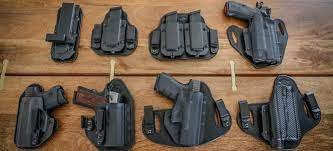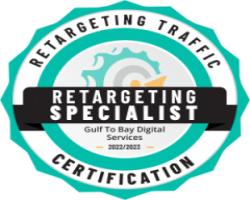Importance of training before using firearm holsters
In handling a firearm, there are apparently several responsibilities involved. It should be noted that a firearm holster should not be used without prior training for safe handling of the weapon since it poses danger not only to the handler but to those around them.

Introduction: Safety Starts Before the Draw
In handling a firearm, there are apparently several responsibilities involved. Although selecting the right holster or a holster that can be classified as a well-crafted leather holster or custom leather holster is pivotal, it is but one half of the task. It should be noted that a firearm holster should not be used without prior training for safe handling of the weapon since it poses danger not only to the handler but to those around them.
The misconception stormed with most gun owners guessing that as long as they can hold the gun and shoot, they are well-equipped. But holster training is not only about aiming; it is about drawing abilities, the way a pistol is holstered and the important factor that can influence the result of the actions—the nerves. For the novice carrier as well as the experienced one, it is mandatory to know how to effectively and safely use your holster.
Why Holster Training Matters
1. Preventing Accidental Discharges
That’s why training before using a holster is a prerequisite number one, because otherwise you can discharge the gun on sole accident. Trigger control means not drawing or holstering too rapidly or using poor techniques whereby the finger strikes the trigger. In real life, such a mistake could cost one’s life.
Adequate training also enables the proper reinforcement of trigger discipline, which should also acquaint the holder with the correct way of grasping and releasing a firearm without causing accidents, as well as working under pressure and stress.
2. Muscle Memory and Speed
As shown by the scenarios of civilian response, failure to be quick in a way can indeed be lethal. This is primarily the case because once the item is used frequently, it becomes second nature and the movements are done without much thought. This does not translate to firing more bullets—it is merely the act of hip shooting with competency and precision.
This eye–hand coordination is strengthened during training and becomes particularly crucial if one uses an independently designed leather holster with features different from universal or synthetic holsters.
The influence of the choice of the holster type during training
Despite the fact that you may be able to find an endless number of holsters available in the market, not all are the same. The leather holsters, for instance are classic, and they gain a perfect shape with the wearers’ body to increase both comfort and security of the gun. Custom holsters go even further by being built for specific models of the firearm or the user’s choices, such as the angle at which the holster sits on the belt, the system of retention or the belt loop size.
Nevertheless, regular dealings with leather—since it is a natural material—are needed. Occasionally, it may be a little different and so might the draw compared to other holster materials such as hard polymer holsters popularized by Kydex. Unless a user has been trained how to appropriately use and how to maintain leather holsters, they can easily find themselves contorting during the crucial moment.
Key Considerations During Training:
• How tightly the holster retains the firearm.
• Whether or not it can open at the thumb break or has a retention strap.
one has to consider how well the garments fit the body and your clothes.
• Position of the angle and the hand depending on the build of the person who holds it.
That is why it is advisable to train with the holster that you intend to use during the shooting practice so that you can get the feel of how the holster behaves under stress.
Holster Training Techniques Every Gun Owner Should Practice
1. Safe Drawing and Holstering
The skills that should be in the list of priorities. Encroachment training should begin gradually and focus on accurate, repeatable procedures.
• In the interest of safety, avoid pointing your firearm at another person or at any object that you have no intention of shooting.
• In clearing clothing, use your support hand.
• Maintain proper grip and stance.
• Holster slowly and deliberately.
2. Dry Fire Drills
One of the major advantages of this kind of practice is the ability to minimize the level of nervousness when handling the weapons and at the same time gain confidence. Practicing with your ammunition with your custom leather holsters is well within the realms of possibility and costs drastically less than actual firing.
3. Drawing from Concealment
Shirts, jackets, and belts compromise the usability of the weapon, as do buttons and pockets. For training, the practicality of clothing and its setting in daily carry situations should be replicated.
4. Shooting on the Move
To build further on basic drills, practice with limited movement, making movement backward, shifting side to side, and balancing while drawing. These are the skills that distinguish true amateurs from those who will provide cargo transportation with all the necessary equipment.
Professional Training vs. Self-Practice
A lot is to be gained from practice but nothing compares to having been taught by a professional. Certified firearms instructors can:
• Observe and correct poor habits.
• Provide real-time feedback.
• Teach situational awareness.
• Facilitate a smooth transition through the various range of scenarios.
Most shooting facilities provide courses that are specific to holsters and they include those meant for concealed or duty purposes. Some of the things that you should know is that few hours spent in professional training can greatly help when one is faced with pressure.
Psychological Preparedness and Confidence
Training isn't just physical—it's mental. There is no doubt that the possession of a firearm alters your guard and perspective in one way or another. First, you have to pay attention to your surroundings; second, be knowledgeable of the law; and third, feel calm.
Belief or rather confidence, in one’s equipment, which comprises a leather holster, is very crucial. By practicing it on a daily basis or before a competition and knowing your draw backward and forward, you stand to be far more composed if there is an actual emergency.
Holster Safety Tips for Everyday Carry
• Get Daily: This is particularly because leather holsters especially can wear, stretch or be damaged easily.
• Secure Placement: Check that its position around your belt or waistband provides security to your holster.
• Do not Touch the Weapon: It is prohibited to alter your firearm or constantly shift it within your belt once it is in place.
• Practice at Home: Considering that most disasters involve spending time at home, it is useful to engage in short training exercises at home.
Conclusion: Don’t Just Carry—Carry Responsibly
Getting a durable and high-quality leather holster or getting a personalized leather holster is a significant milestone for any person who is into firearms. But the greatest burden starts with the preparation, as the generalization indicates: A holster is used on you—training you on how to use what is on you.
And in the year 2025, where more and more people are becoming interested in concealed carry and self-defense, it certainly doesn’t have any shortcuts. Be dedicated to practice, acknowledge the capability of your gun and ensure that every draw does not start on a random note.
This is why owning a gun is not just about defense; it is also about readiness, aiming for the target, and taking responsibility.
What's Your Reaction?





















